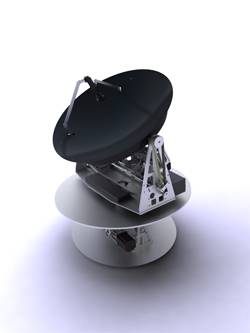Faster Broadband at Sea
Broadband for applications at sea is an area that is experiencing rapid growth and one that demands increasingly fast data transfer speeds.
Levels of use are blossoming as communication, control and monitoring are increasingly being carried via onshore operative nodes. Inmarsat and Iridium, the two transmission systems currently in use, have reached their saturation point, and the next generation of satellite communication for the maritime industry is now starting to take shape.
Several satellite operators are on the verge of launching global capacity to cover the world's seas. In order to obtain higher bandwidths, frequency has to be increased. This places more stringent demands on the communications equipment on board ships.
Gothenburg-based Satcube AB is in the process of developing terminals to handle the next generation of satellite capacity. "These satellite terminals need to be more accurate and demonstrate greater efficiency than the old L-band system terminals they replace," says Jakob Kallmér, Satcube's CEO. "Availability and robustness requirements continue to be extensive. However, customers aren't prepared to pay much more for the hardware. That's why you need to take a new approach when developing this type of terminal," he continues.
Satcube has developed a high efficiency antenna system in order to drive down the cost of the equipment's active components. Using an innovative platform, the antenna is able to maintain position in relation to a satellite without the need for expensive optical gyros. The platform also features an active dampening system, which eliminates shocks and vibrations, minimising service interruptions and the number of system failures. Kallmér continues "We drew inspiration from the automotive industry, incorporating simple, inexpensive components without stretching the limits of function or quality. This approach has resulted in a number of innovations for which we have submitted patent applications."
The company plans to release a beta version of the system this winter to test the concept in the demanding operational environment of the North Sea. It is expected that a fully industrialised product will be available by mid-2013.














